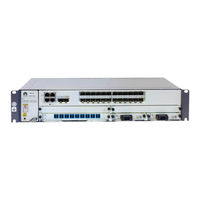Huawei V200R005 Manuals
Manuals and User Guides for Huawei V200R005. We have 1 Huawei V200R005 manual available for free PDF download: Configuration Manual
Huawei V200R005 Configuration Manual (237 pages)
Brand: Huawei
|
Category: Network Router
|
Size: 1.29 MB
Table of Contents
-
Figures
11 -
-
Introduction23
-
Functions30
-
File System31
-
-
Introduction42
-
CLI Overview
53-
CLI Overview55
-
-
-
-
File System
103-
File System104
-
Introduction105
-
File System105
-
Storage Devices105
-
Files105
-
Directories105
-
-
Managing Files108
-
Copying a File109
-
Moving a File109
-
Renaming a File110
-
Deleting a File110
-
Undeleting Files110
-
-
Introduction
115-
Introduction117
-
-
Introduction124
-
Configuring TFTP134
-
-
Telnet and Ssh
147-
Introduction150
-
Telnet and SSH150
-
-
-
-
-
-
-
Introduction198
-
-
-
Introduction208
-
Introduction209
-
License209
-
-
-
-
Patch Management
214-
Patch Management216
-
-
Introduction217
-
-
Loading a Patch219
-
Advertisement
Advertisement
